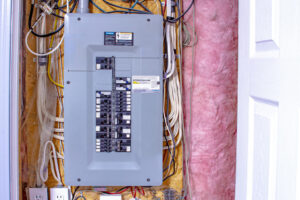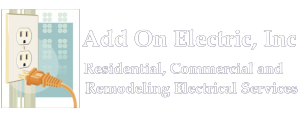Prevalent Home Electrical Problems Found in Phoenix Homes

Having issues with the electricity in your home in Phoenix can be an extremely frustrating experience. They can result in the loss of power, the disruption of technology, the inability to complete tasks, and, more dangerously, they can lead to dangerous and harmful situations. Problems with electrical systems are significantly more frequent than many people realize. In 2019, faulty wiring was the cause of more than 15,000 fires that broke out in residential buildings, as reported by the National Fire Protection Association (NFPA). These fires resulted in the deaths of 94 people, injuries to 1,756 people, and property damage totaling over $2.2 billion. You are in luck because there are measures that can be taken to safeguard your house against electrical issues. This article will discuss the most common electrical issues that affect homeowners, as well as offer advice on how to avoid these issues:
Overloaded circuits
A circuit overload will occur when an excessive number of appliances are plugged into the same circuit. For instance, if you have a circuit specifically designed for an electric oven, plugging in both the oven and the stove simultaneously will cause the circuit’s capacity to be exceeded. You risk overloading the circuit and tripping the breaker when you hit an excessive number of appliances into a single course. When a circuit is overloaded with a current rating higher than the circuit breaker, the breaker will trip, indicating that the course has become overloaded. This is yet another way that a circuit can become overloaded. If you put a light bulb with a high wattage in a light fixture designed to work with a light bulb with a low wattage, the high bulb temperature could cause the socket and the insulation in the institution to melt. This could result in sparks forming between the wires, leading to an electrical fire.
Even if you take the light bulb out of the socket, the wiring, and the socket itself will have been damaged. Always check to ensure that the bulb’s wattage and fitting are compatible to prevent any damage to the fixture. If the institution does not show a marking for the appropriate wattage, the safest action is to use a bulb with a rating of no more than 60 watts. Be careful to avoid overloading electrical devices by not plugging in excessively many electrical devices into a single outlet and keeping an eye on the capacity of sockets to ensure that they are not overloaded. Not only can excessive electrical loads cause electrical circuits to overload, which triggers the tripping of circuit breakers, but they can also cause damage to the electrical equipment. As a result of the prevalence of circuit overloads as a contributing factor in electrical fires, the electrical systems must be kept in good condition.
Various Lights Flashing
Dimming of the light output and flickering of the light fixtures are symptoms of problems with the wiring that high voltage surges, loose connections, or faulty wiring can cause. In addition, electrical equipment that is both old and out of date can fail, as well as dimming and flickering. Wiring in older homes frequently deteriorates over time, leading to electrical faults and necessitating its replacement. The flickering or dimming of the lights may also be caused by outdated light fixtures that are getting close to the end of their useful lives and will require replacement. Changing out the traditional power supply for a “smart” power supply is one solution to the issue at hand. These power supplies monitor the current and voltage levels in the power supply, and any necessary adjustments are made to those levels. Another option is installing dimmer switches, which prevent voltage spikes before they affect the lights. Alternatively, you could use motion sensors in conjunction with CFLs and LEDs. Generally, keeping your electrical equipment safe and avoiding damage and discomfort can be accomplished through correctly installing light fixtures and thorough and experienced wiring.
Ground Fault Circuit Interrupters (GFCIs)
Electrical safety devices, known as ground fault circuit interrupters, or GFCIs, are intended to protect users from receiving an electric shock by detecting and breaking the circuit in the event of an electrical surge. GFCIs are susceptible to tripping due to improper appliance operation, faulty wiring, or loose connections. Even when only light loads are connected, such as when you use the electrical system to charge your phone or laptop, GFCIs have the potential to trip and send an alarm. When the power is turned off and then back on again, GFCIs are programmed to reset themselves automatically. However, the GFCIs in question might still trip regularly even if the issue is fixed.
Circuit Breakers That Have Been Tripped
Your home’s safety from potential electrical overloads is the primary function of a circuit breaker. The breaker will automatically turn off when an excessive amount of current is drawn from the circuit. The tripping of electrical circuit breakers is inconvenient and carries the risk of potentially dangerous consequences. In most cases, the problem can be solved quickly and easily by simply turning on the circuit breaker.
Circuit breakers can be tripped for several different reasons.
After a circuit overload, the most common cause of tripped circuit breakers is that the circuit has been overloaded, at which point you should either reset the circuit breaker or turn off the power at the breaker box. If the breaker trips due to loose electrical wiring, you should either tighten the wiring yourself or get in touch with an electrician who is qualified in the field. An overload on one of the circuits in your home may be causing the circuit breakers to trip repeatedly.
Electrical Surges
Surges in electrical current have the potential to start fires and cause damage to electrical appliances and electronic devices. An electrical surge happens when electricity travels faster than it usually do. This is typically the result of a power outage. Still, it can also be caused by damaged ground wires, faulty wiring, incorrectly installed appliances, or even metal pipe fittings coming into contact with live wires. A lightning strike is another potential source of an electrical surge; to avoid this issue, you should use a surge protector to detect and stop waves before they cause harm to your electronics.
